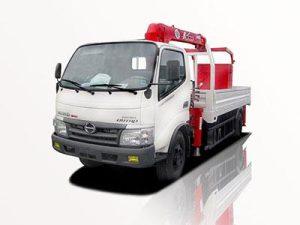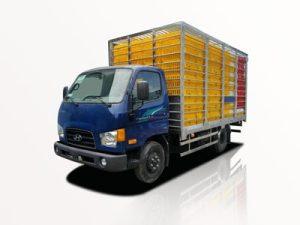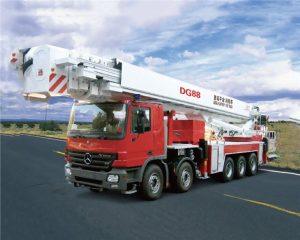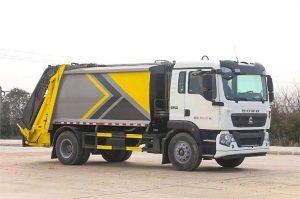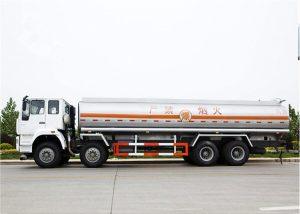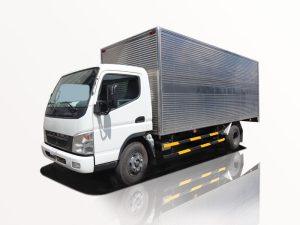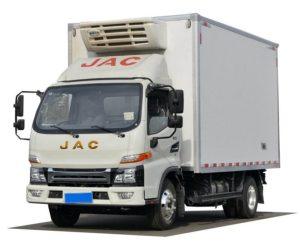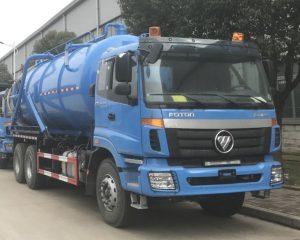Monday to Saturday - 8:00 -17:30
Understanding the Versatility of Trucks with Hooks: A Comprehensive Guide
Trucks with hooks, commonly referred to as hook lift trucks, are specialized vehicles designed for the efficient transportation of containers, waste, and other heavy materials. Their unique capability to lift and transport loads using a hook mechanism has made them indispensable in various industries, from construction to waste management. This article delves into the functions, advantages, types, applications, and best practices regarding trucks with hooks, ensuring you gain a thorough understanding of their importance and functionality.
The Basics of Trucks with Hooks
What is a Truck with Hook?
A truck with a hook is a heavy-duty vehicle designed to handle various lifting tasks via a hook system. This type of truck typically features a hydraulic system that enables it to lift containers or other loads efficiently, making it a popular choice for industries that require moving heavy materials.
How Does a Hook Lift Truck Work?
The operation of a hook lift truck relies on a hydraulic mechanism that can raise and lower the hook attached to the truck’s chassis. Here’s a brief overview of how it works:
- The operator positions the truck near the load to be lifted.
- Using controls, the hydraulic system extends the hook and engages with the container.
- Once secured, the hydraulic system lifts the container off the ground.
- The truck can then transport the load to the desired location.
Advantages of Using Trucks with Hooks
1. Versatility
Trucks with hooks can transport a variety of containers and materials, making them suitable for various industries, including waste management, construction, and recycling.
2. Efficient Loading and Unloading
Hook lift trucks enable quick loading and unloading processes. They can be equipped with various container sizes, allowing companies to optimize their logistics operations.
3. Cost-Effectiveness
Investing in a hook lift truck can save costs related to labor as they require fewer workers for loading and unloading tasks than traditional methods.
4. Durability and Reliability
Designed for heavy-duty use, trucks with hooks are built to last. Their robust construction translates to fewer maintenance issues over time.
Types of Trucks with Hooks
1. Standard Hook Lift Trucks
These are the most common form of hook lift trucks, featuring standard hook mechanisms that are great for various lifting tasks.
2. Compaction Hook Lift Trucks
Designed for waste management, these trucks come with compaction systems that can compact waste materials during transportation.
3. Roll-Off Trucks
Roll-off trucks feature a different design but operate similarly, offering a simple way to drop off and pick up containers without the need for extensive maneuvering.
4. Custom Hook Lift Trucks
These trucks are tailored to meet specific industry requirements, adapting the hook mechanism to handle unique loads or tasks.
Applications of Trucks with Hooks
1. Construction Sites
In construction, trucks with hooks transport heavy building materials, thereby enhancing efficiency and safety on-site.
2. Waste Management
The waste management industry heavily relies on hook lift trucks for collecting and transporting waste containers to disposal facilities.
3. Recycling Facilities
Recycling centers use these trucks to move recyclable materials, promoting sustainability while ensuring efficient material transfer.
4. Landscaping and Tree Removal
These trucks can handle heavy loads, such as tree debris and landscaping materials, making them ideal for landscaping companies.
Practical Tips for Operating Hook Lift Trucks
1. Training and Certification
Ensure that all operators are properly trained and certified to use hook lift trucks. This training will enhance safety and efficiency on the job.
2. Regular Maintenance
Conduct regular inspections and maintenance on the hydraulic components and overall structure of the truck to prevent breakdowns and ensure longevity.
3. Load Capacity Awareness
Be aware of the truck’s load capacity. Overloading can cause damage to the vehicle and pose safety risks.
Table: Load Capacity Guidelines
| Truck Model | Maximum Load Capacity (lbs) |
|---|---|
| Model A | 15,000 |
| Model B | 20,000 |
| Model C | 25,000 |
4. Proper Securing of Loads
Always ensure the load is secured correctly before transport. Poorly secured loads can lead to accidents during transit.
Safety Considerations for Truck Operators
1. Personal Protective Equipment (PPE)
Operators should wear appropriate PPE, including gloves, hard hats, and safety vests while operating the truck.
2. Clear Communication
Establish clear communication protocols amongst crew members to avoid misunderstandings during loading and unloading procedures.
3. Site Hazards Assessment
Before operation, assess the worksite for potential hazards such as uneven ground or overhead obstacles that may pose risks.
4. Emergency Procedures
Maintain clear emergency procedures for all operators in case of vehicle malfunction or accidents.
Trucks with Hooks vs. Traditional Trucks
1. Efficiency Comparison
Hook lift trucks can save time and labor compared to traditional trucks by reducing the manpower needed for loading and unloading.
2. Load Flexibility
Trucks with hooks offer greater flexibility for varying load sizes and types. Traditional trucks, however, may require specialized equipment for different loads.
3. Operational Costs
While hook lift trucks may have a higher initial cost, their operational efficiency can lead to long-term savings compared to traditional methods.
Future Trends in Hook Lift Truck Technology
1. Electric and Hybrid Models
With growing environmental consciousness, electric and hybrid models of hook lift trucks are being developed to reduce emissions and operational costs.
2. Advanced Hydraulic Systems
Innovations in hydraulic technologies will improve lifting capabilities and efficiency, making hook lift trucks even more versatile.
3. Autonomous Hook Lift Trucks
Future developments may include autonomous operation technologies that enhance safety and reduce the potential for human error.
Frequently Asked Questions (FAQs)
1. What is the primary use of trucks with hooks?
Trucks with hooks are primarily used for transporting containers and heavy materials in various industries, including waste management and construction.
2. How do I choose the right hook lift truck for my needs?
Consider factors such as load capacity, type of materials you will be transporting, and specific features that may benefit your operations.
3. Are there weight limits for hook lift trucks?
Yes, each hook lift truck has a maximum load capacity that should not be exceeded. Always refer to the manufacturer’s specifications.
4. Is training mandatory for operating hook lift trucks?
Yes, proper training is essential for safe operation and compliance with regulations. Operators should be certified to ensure safety and efficiency.
5. How often should a hook lift truck be maintained?
Regular maintenance should be conducted as per the manufacturer’s guidelines, typically every three to six months, or based on usage levels.
6. Can hook lift trucks operate in adverse weather conditions?
While hook lift trucks are designed for durability, operators should exercise caution and assess conditions before operating in adverse weather to ensure safety.


